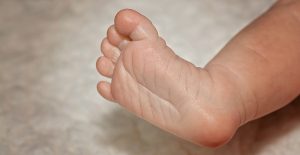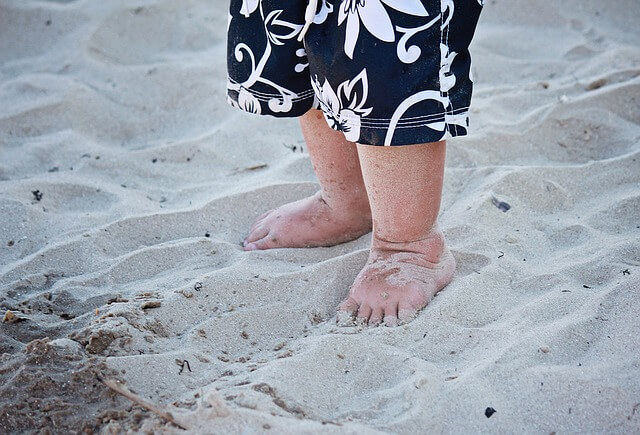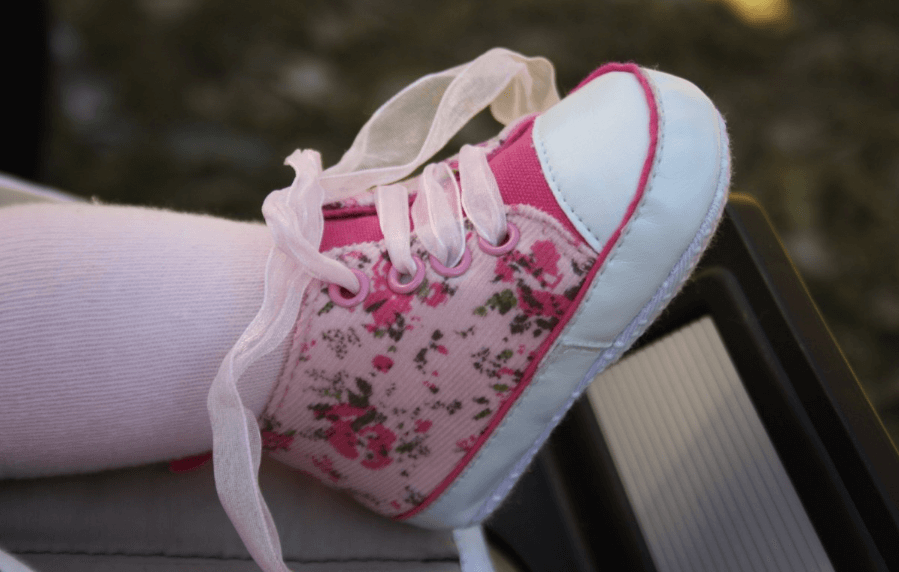What Are the Benefits of Walking Barefoot for Children?

Walking barefoot at home, at least for a while every day can help children improve their balance and body posture.
Sometimes as soon as children are born, they’re given shoes or other types of footwear to protect them from sharp objects, germs, dirt and other external threats.
Although those are all valid reasons for providing your children with footwear, it can also be counterproductive as it prevents them from spending time barefoot.
Parents often make their children wear shoes all of the time because they’re unaware of the multiple benefits that walking barefoot provides. Nowadays children have shoes for outdoors and for when they’re at home.
Keep in mind that up to the age of 9 months, children have greater sensitivity on the soles of their feet than they do on their palms. Walking barefoot has been found to provide tactile stimulation and it also promotes their neurological development.
Why is walking barefoot good for children?
Children should be allowed to walk barefoot at specific times of the day. This will allow them to explore their environment safely. Walking barefoot not only helps promote good posture and balance, it also helps create a direct bond with the ground.
As a result, it helps create emotional stability. In other words, walking barefoot can increase feelings such as familiarity and self-confidence.
-
Improves foot development
Children should spend some time barefoot every day. Walking barefoot actually helps their feet develop naturally. Walking barefoot also helps them develop a neutral stride (neither too supine nor too pronating).
Pronator walkers are those who walk putting most of their weight on their heel. Supine walkers, on the other hand, tend to put most of their weight on the ball of their foot, therefore they seem to go from point A to point B on the tips of their toes.
Your child’s walking style can influence a lot of things in his life, therefore as a parent, you should pay attention to it.
Walking barefoot stimulates the child’s ability to grip with his toes. It also stimulates the development of his bones and ligaments.
-
Direct contact with nature
When children walk barefoot on the beach, they experience a sense of freedom that can be very pleasant and satisfying. Walking barefoot also helps children have a complete sensory experience. Millions of years ago, we walked barefoot and developed our senses to the fullest.

-
Stimulates the nervous system
Walking barefoot stimulates children’s immune system. It also helps them develop awareness of their own bodies. While barefoot, multiple nerve endings and pressure points transmit information to the body. This enables children to know how to move better through the space they’re in.
-
Less prone to injury
When children are barefoot, their feet are strengthened. This makes them less prone to injury. Walking barefoot also promotes the development of their joints and muscles.
-
Improves their perception of space
Another benefit of walking barefoot is that it helps improve children’s perception of their environment and their relationship to it. This allows them to locate and identify objects around them. It also allows them to be cautions when faced with possible threats.
When should babies wear sneakers?
Although parents often pick out footwear for their children from an early age, it’s preferable to provide them with socks. Their feet are still growing and they should be unrestricted.
Keep in mind that you can place your child in sneakers for a short while, maybe for a picture. However, it’s best to wait until the child starts to take his first steps before having him wear sneakers.
Babies only need shoes when they start walking, not a second before. They should only use socks until they’re ready for shoes.

How to pick out the right shoes for the first year?
Children start to walk between the age of 12 to 15 months. This is when you should provide them with shoes. The shoes you pick should be suitable for their feet. If your little ones feel uncomfortable with the shoes they have, you should look for other more comfortable options.
Here are a few characteristics that parents should keep in mind when it comes to picking out the right shoes:
- Children’s shoes should protect their feet. This protection should be provided without restricting and isolating their feet from external stimuli. Children should be allowed to control their balance, movement and posture. The sole of their shoes should also have optimal contact with the ground.
- Their shoes should be made of natural materials. This will allow their feet to breathe, which will help prevent allergies.
- The soles of their shoes should be non-slip and flexible. This will allow the child’s feet to curve properly while walking.
- The tips of their shoes should be rounded and wide. These characteristics allow their toes to move more freely. Keep in mind that the tips of their shoes shouldn’t be more than 15 millimeters from the tips of their toes.
Walking barefoot is not “dirty” at all, it’s actually necessary for children’s proper development. Like always it’s best to avoid extremes. Children shouldn’t wear too much footwear or spend too much time barefoot either. Parents should know how to maintain a positive balance.
All cited sources were thoroughly reviewed by our team to ensure their quality, reliability, currency, and validity. The bibliography of this article was considered reliable and of academic or scientific accuracy.
- Hedge, BM. Barefoot walking and running. Journal, Indian Academy of Clinical Medicine z Vol. 15, No. 1 z January-March, 2014. [Online] Avaiable at: http://medind.nic.in/jac/t14/i1/jact14i1p7.pdf
- Ingkatecha, Onwaree. (2012). Barefoot Running. Journal of Sport and Exercise Science. 9.
- Hollander, Karsten & van der Zwaard, Babette & de Villiers, Elbe & Braumann, K-M & Venter, Rachel & Zech, Astrid. (2016). The effects of being habitually barefoot on foot mechanics and motor performance in children and adolescents aged 6-18 years: Study protocol for a multicenter cross-sectional study (Barefoot LIFE project). Journal of Foot and Ankle Research. 9. 10.1186/s13047-016-0166-1.
This text is provided for informational purposes only and does not replace consultation with a professional. If in doubt, consult your specialist.



